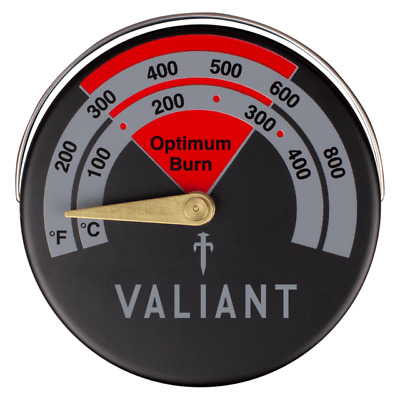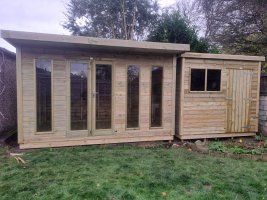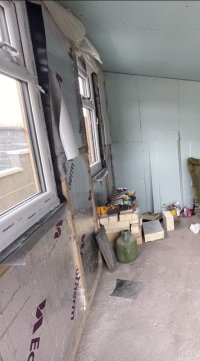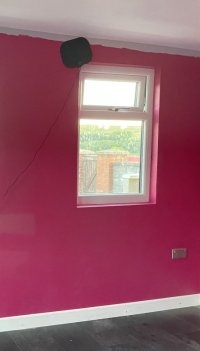We have a 5-8kw in the large lounge, and a 2-?Kw in the small home office. Both work best when loaded fully, with decent wood, inside in a house its important to run them to temperature to make sure the chimmney / flue isn't gunked up.
Things to bear in mind:
- Summerhouse unlikely to have insulation so will need more heat
- Once lit woodburners shouldnt really be left un attended. Once lit they tend to burn for a couple of hours atleast and need fettling to get them to right temperature
- You need the wood, looking for offcuts and scraps is a nice hobby but very time comsuming cutting to size, most people end up buying a trailer load, which needs storing in a proper store
- You need to have the burner a certain distance from any conbustible material. I know the distances as we use them in timber buildings at work, but to be to code you need to check yourself
- You'll likely to need a plinth to put it on, and a non conbustible boards put on wall
- Flue will need to be put through the wall / roof, being timber you'll need to have a gap and stuff with intumescent material (again there are regs for the gap size)
- Remember the C02 detector (and maybe fire extigusher)
I love our woodburners, and they are saving us money at the money on heating the house, but not sure about the application you suggest. A fan heater is loads less hassle, if less romantic
You could go down the more simple route, utilise the burner, make a simple flue, get some plasterboard and experiment.





